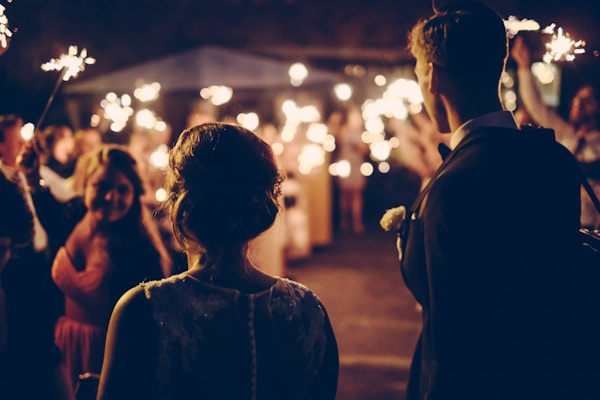How to Design a Wedding Dress That Flatter Different Body Types
Introduction
Designing the perfect wedding dress involves more than just choosing a fabric and a color. One of the most crucial aspects of creating a stunning gown is understanding how to flatter different body types. This article will guide you through the process of designing a wedding dress that complements every bride’s unique figure. Whether you are a designer or a bride-to-be, this comprehensive guide provides valuable insights into creating the ultimate dream dress.
Understanding Body Types
Before diving into the design process, it is essential to understand the various body types. Each body shape has its own strengths and areas that can be accentuated or minimized. Here are the most common body types:
| Body Type | Description | Design Tips |
| A-Shaped | Narrow shoulders and wider hips. | Consider gowns with structured bodices and flowing skirts. |
| V-Shaped | Broader shoulders and narrower hips. | A-line dresses can help balance proportions. |
| Rectangle | Similar bust and hip measurements with a straight waist. | Add ruffles or embellishments to create curves. |
| Hourglass | Well-defined waist with balanced bust and hips. | Fitted styles and mermaid gowns enhance this shape. |
| Plus Size | Variety of shapes with fuller figures. | Empire waistlines and A-line skirts create a flattering silhouette. |
Finding the Right Silhouette
The silhouette of a wedding dress plays a vital role in how it flatters the body. Here are a few popular silhouettes that suit different body types:
- A-Line: Versatile and universally flattering, perfect for A-shaped and hourglass body types.
- Ball Gown: Ideal for the bride who wants to create a dramatic look; suitable for most body types, especially A-shaped.
- Mermaid: This fitted style accentuates curves and is fantastic for hourglass figures.
- Sheath: Sleek and form-fitting, this style works well on rectange and hourglass body types.
- Empire Waist: Great for plus-size and A-shaped brides, it emphasizes the bust and flows down from the waist.
Fabric Choices Matter
The choice of fabric can significantly impact the overall look and feel of a wedding dress. Here are some fabric options and their suitability for different body types:
| Fabric | Best For |
| Satin | All body types; gives a luxurious look and drapes beautifully. |
| Lace | A-line and ball gown styles; adds elegance and texture. |
| Tulle | Perfect for ball gowns; creates volume without adding bulk. |
| Chiffon | Flattering for A-shaped and hourglass figures; lightweight and flows nicely. |
| Crepe | Hugging the figure, suitable for hourglass and rectangle body types. |
Incorporating Design Elements
When designing a wedding dress, the details can make all the difference. Here are some design elements to consider:
- Necklines: Different necklines can enhance or soften features. V-necks can elongate the body, while sweetheart necklines can add femininity.
- Sleeves: Adding sleeves can provide coverage for the arms and is perfect for various wedding themes.
- Embellishments: Strategically placed beading or embroidery can draw attention to the waist or highlight the bust.
Customizing for Individual Preferences
Every bride has her own unique vision for her wedding dress. Consider personalized elements such as:
- Layering: Use layers to add dimension and complexity to the design.
- Accents: Incorporate bridal accessories that complement the dress and body type.
- Colors: While white is traditional, pastel and even bold colors can suit different personalities and wedding themes.
Accessories Matter Too
Don’t overlook the importance of accessories! They can transform a wedding gown and enhance the overall look. Consider:
- Veils: The length and style of a veil can complement the dress and body type.
- Jewelry: Choose pieces that balance the neckline and add sparkle without overpowering the dress.
- Footwear: The right shoes can enhance comfort and complete the bridal ensemble.
Real-Life Examples and Inspirations
Many celebrities have set trends with their Wedding dresses, inspiring brides across the globe. For instance:
- Kate Middleton: Her A-line gown with lace sleeves was timeless and flattering for her figure.
- Meghan Markle: Chose an elegant boat neck style that emphasized her neckline and reflected modernity.
- Rihanna: Her dramatic ball gown showcased her hourglass figure and set new fashion standards.

Conclusion
Designing a wedding dress that flatters different body types is a blend of understanding shape, fabric, and personal style. By focusing on the unique aspects of each body type and incorporating versatile silhouettes, fabrics, and accessories, you can create a stunning gown that makes every bride feel beautiful on her special day. Remember to prioritize comfort and fit, as these elements are just as important as aesthetics. Whether you are a designer creating for others or a bride envisioning your dream dress, take these tips to heart to ensure the perfect wedding dress experience.
Tips:
- Consider the bride’s preferences—her comfort and personal style should guide the design process.
- Be open to experimenting with different silhouettes and fabrics that may surprise you as flattering!
- Don’t skip the fittings! A well-fitted dress enhances beauty and confidence.
- Listen to the bride’s feedback; collaboration leads to the best results.
By following these guidelines and embracing the beauty of diversity in body shapes, designing the perfect wedding dress can be an enjoyable and fulfilling journey.